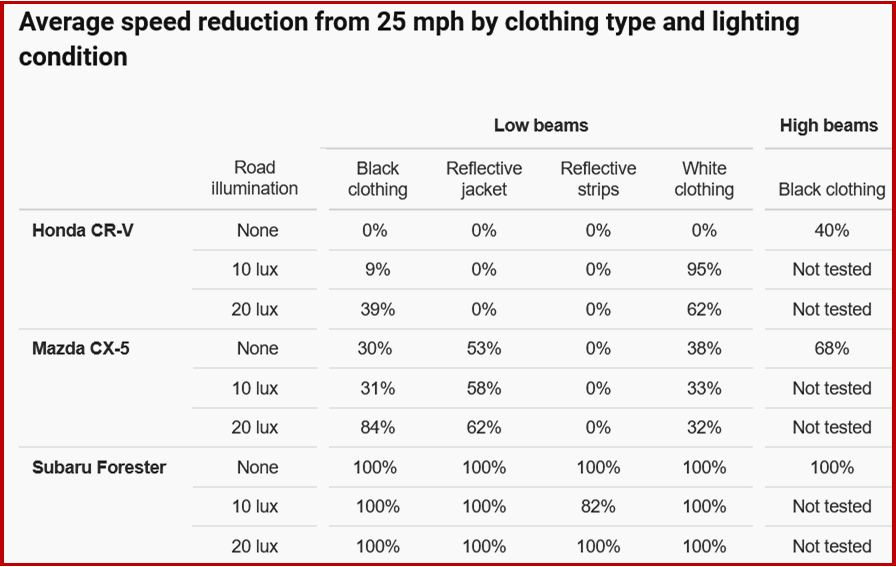Click to enlarge.
The tests were run at 25 mph with no roadway lighting, with 10 lux of illumination in the crosswalk or with the federally recommended 20 lux of illumination in the crosswalk. The dummy crossed the track perpendicular to the path of the vehicle in all scenarios.
The CR-V and CX-5 hit the dummy in 84% and 88% of the test runs, respectively, while the Forester avoided a collision in all but one trial. Neither the CR-V nor CX-5 slowed at all when the dummy was wearing clothing with reflective strips that articulated its limbs. Otherwise, the performance of the Honda and Mazda crash avoidance systems varied.
When the dummy was dressed in black, both vehicles slowed substantially when using their high beams — a test that was only conducted with no roadway illumination. Using their low beams in those same conditions, the CR-V failed to slow at all and the CX-5 reduced its speed by less than a third. Both vehicles did much better with 20 lux of additional light.
For all the other types of clothing, the vehicles were only tested using their low beams.
When the dummy was dressed in the reflective jacket, the CR-V didn’t slow in any of the trials, regardless of additional roadway lighting. In contrast, with no roadway illumination and with 10 lux of added light, the CX-5 slowed much more than it did when the dummy was clad in black. But with 20 lux of added light, it performed worse with the dummy in the reflective jacket than when it was wearing the black outfit.
When the dummy was dressed in white, the CR-V didn’t slow at all with no added roadway illumination but notched up its best performances with 10 and 20 lux of added light. However, it did better with 10 lux of illumination than with 20 lux. The CX-5 performed better than it did with the dummy in black but not as well as with the dummy wearing the reflective jacket. It also slowed less with increased roadway illumination when the dummy was wearing white.
In contrast to the two other vehicles, the Subaru came to a complete stop without hitting the pedestrian dummy in every trial except one run in which the dummy was wearing clothing with reflective strips and the roadway was illuminated to 10 lux. Even in that run, it slowed by more than 80%.


